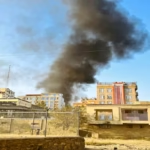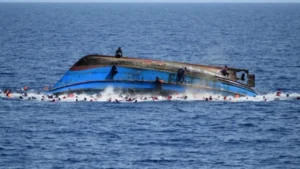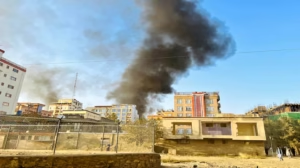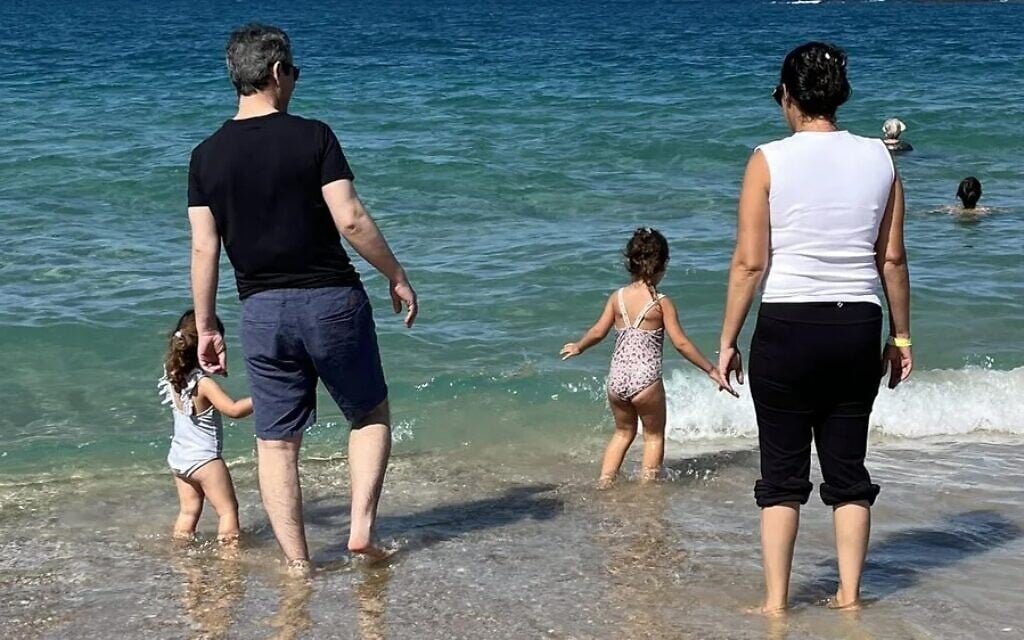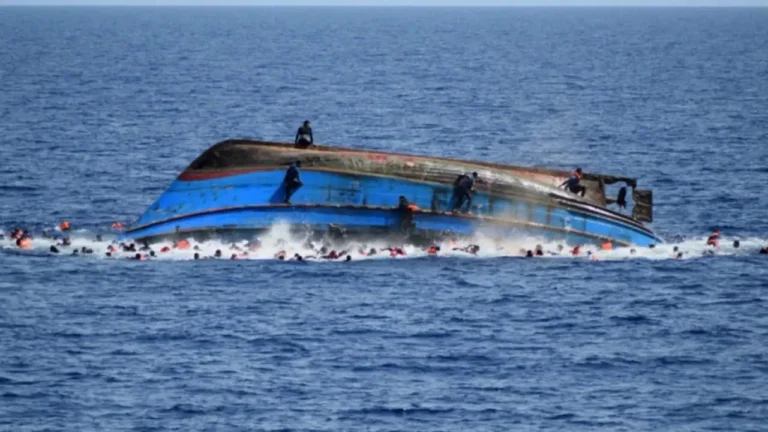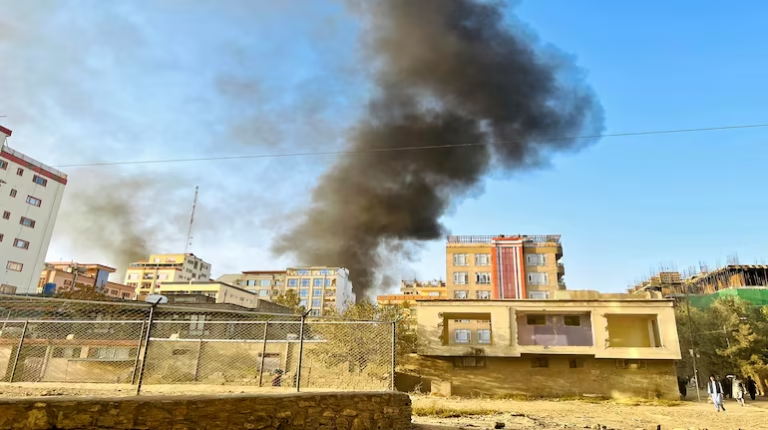Israeli troops in Gaza received the remains of an apparent hostage that Hamas handed over to the Red Cross late Friday night, two days after the Palestinian terror group claimed to have returned all the dead captives it could uncover.
Upon receiving the body, the Israel Defense Forces inspected the casket before draping it in an Israeli flag and holding a short ceremony led by a military rabbi.
The remains were then brought across the border early Saturday, with police escorting the casket to the Abu Kabir forensic institute in Tel Aviv for identification, a process which officials have said may take up to two days.
Hamas did not identify the hostage whose body it handed over. If confirmed to belong to a captive, it would mean that 18 bodies of dead captives still remain in the Gaza Strip after 28 were held there at the start of the current ceasefire.
The IDF said the Red Cross collected the casket from Hamas in southern Gaza’s Khan Younis, where footage and images from earlier Friday showed Hamas operatives digging in the Hamad Town residential complex, with Arab media naming a hostage whose body was apparently buried in a tunnel in the area.
According to Channel 12 news, the IDF expects Hamas to return the bodies of further hostages next week.
Hamas is looking for the bodies of Israeli hostages in Gaza by digging for tunnels that it placed under an entire residential city where there were thousands of apartments. This is under the Qatari-built Hamad City in Khan Younis, southern Gaza. Hamas gave itself the right to use… pic.twitter.com/qjCkDG05M3
— Ahmed Fouad Alkhatib (@afalkhatib) October 17, 2025
Israel has accused Hamas of withholding at least some of the bodies deliberately, while the terror group insists that it cannot locate them due to the level of destruction in Gaza.
“The issue of the bodies is complex and requires time, especially after the occupation changed the landscape of Gaza,” senior Hamas leader Ghazi Hamad said Friday, while rejecting Israeli threats over the return of the captives’ remains as “unacceptable pressure tactics.”
“We will return the bodies and adhere to the agreement as we promised.”
Hamas on Friday also called for mediators to follow up on the implementation of the remaining provisions of the US-brokered ceasefire agreement with Israel, which brought fighting in Gaza to a halt after two years of war triggered by its October 7, 2023, attack.
The terror group said in a statement that there is a need to complete the formation of a community support committee, which should begin its work in administering the Gaza Strip.
The first phase of the deal has yet to be completed, however, as Hamas has not handed over the remaining deceased hostages. A source familiar with the matter confirmed to The Times of Israel that US special envoy Steve Witkoff will travel to the Middle East on Sunday evening to follow up on the first phase of the agreement’s implementation.
Another source told the Axios news site that Witkoff is expected to visit Israel and Egypt, and will also likely go to Gaza.
Witkoff is expected to try and make progress on the creation of the international stabilization force (ISF), and reconstruction in areas of Gaza that are not under Hamas control, particularly Rafah, the report said.
According to Axios, the visit is set to come amid growing discomfort in Israel over what is perceived to be Hamas foot-dragging over the return of the bodies of hostages that are still held in Gaza, and with the terror group killing and arresting members of rival groups in the Strip.
“We think Hamas is holding between seven to ten bodies that it can return at any minute. They choose not to do it and are creating a crisis,” an unnamed senior Israeli official told the outlet.
The official told Axios that US President Donald Trump called Prime Minister Benjamin Netanyahu as the latter was meeting with advisers on the Hamas refusal to return more bodies, and the Israeli premier told the American leader of concerns over the issue. The Israeli official told Axios that Trump said he was working on the matter.
Axios and the Kan public broadcaster reported that the US told Israel that the issue of the hostages’ bodies should not be used as an excuse to impose sanctions or impact the implementation of unnamed next steps in the deal. While Israel has threatened sanctions such as reducing the entry of aid into the Strip, it has not taken action, Kan noted.
Recovery of hostages ‘complicated’ by clothing that captors dressed them in
Meanwhile, a Turkish official told AFP on Friday that a team of Turkish disaster response specialists was stationed at the Egyptian border awaiting Israeli authorization to enter Gaza and help in search and recovery operations.
The 81-member team from Turkey’s Disaster and Emergency Management Authority (AFAD) is equipped with specialized search-and-rescue tools, including life-detection devices and trained search dogs.
They “are currently waiting at the border on the Egyptian side,” the official said.
The group is prepared to locate and recover bodies trapped under rubble.
“It remains unclear when Israel will allow the Turkish team to enter Gaza,” said the official, who spoke on condition of anonymity.
“Initially, Israel preferred to work with a Qatari team, but we are hopeful that our delegation will be granted access soon.”
A source from Hamas told AFP the Turkish delegation is expected to enter Gaza by Sunday.
There is no immediate comment from Israeli authorities, which do not operate the crossings during the Jewish Sabbath
AFAD personnel are experienced in operating under extreme conditions, having responded to numerous natural disasters, including the devastating earthquake in southeastern Turkey in February 2023, which claimed over 53,000 lives.
The Turkish official notes that the team’s mission includes locating both Palestinian and Israeli bodies, including hostages believed to be buried or hidden in collapsed structures.
However, the task is complicated because some Israeli hostages may have been disguised in local clothing to evade detection by Israeli drones during transfers.
“This situation is expected to complicate search operations and delay progress,” the official said, adding that Hamas is expected to provide location data related to hostages.
Concerns have been raised by some observers over the potential misuse of the Turkish team’s heavy equipment, with fears that it could be repurposed by Hamas to access underground tunnels.
Strikes on ‘suspicious vehicle,’ terror operatives emerging from tunnels
Also Friday, the IDF said it carried out an airstrike Friday against a group of terror operatives who emerged from a tunnel and approached troops in Khan Younis.
The operatives had “posed an imminent threat” to the forces, and they were targeted “in accordance with the deal,” the military says.
Additionally, several terror operatives emerged from a tunnel in the Rafah area and opened fire on Israeli troops, the IDF said, adding that no injuries were caused in the incident.
In another incident, the IDF said it targeted a vehicle that crossed the so-called Yellow Line — to which the military withdrew under the terms of the ceasefire — in Gaza City’s Zeitoun neighborhood.
The “suspicious vehicle” had been identified crossing the line and approaching Israeli forces in the area, the army said.
According to the IDF, warning shots were fired toward the car. After it continued to approach troops, “in a way that threatened them,” the forces struck the vehicle “to remove the threat,” the military said.
Palestinian media reports that the vehicle was carrying displaced Palestinians seeking to return to their homes. Hamas health authorities said 11 members of a family were killed, including seven children and three women.
The IDF has repeatedly warned Palestinians not to enter areas in Gaza currently under Israeli control or approach troops. Defense Minister Israel Katz said Friday that he instructed the military to place physical markers along the Yellow Line so that the boundaries of IDF control are clearly visible.
He said the markers will serve as a warning to “Hamas terrorists and Gaza residents that any violation or attempt to cross the line will be met with fire.”
This image published by Defense Minister Israel Katz’s office on October 17, 2025, shows a mockup of a physical marker that will be placed in the Gaza Strip to demarcate the Yellow Line
The Yellow Line, as drawn out by mediators, encompasses over half of the Strip’s territory, or 53% — most of which is outside of urban areas. In reality, the IDF is not holding all of that territory with ground troops, with many of its posts positioned closer to the Israeli border.
In potential future phases of the ceasefire deal, the IDF will further pull back its troops in the Strip.
According to an image published by Katz’s office, the markers that the IDF is set to place in Gaza appear similar to the blue barrels that mark the UN-recognized Blue Line between Israel and Lebanon.



